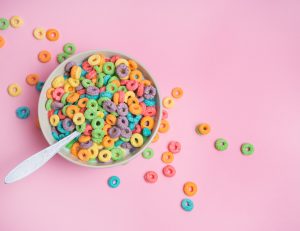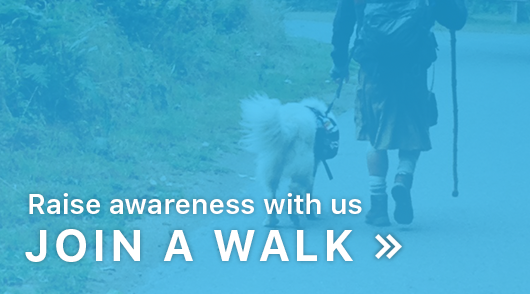
Here are two important aticles including information about ingredients in Roundup — including glyphosate — and how this and other ingredients in lawn treatments can affect the health of your pets and your children [see the second article below this one].
From Leavenworth Times
Most of us are aware of the negative impact of pesticides on pollinators and beneficial insects. Could the chemicals we use on our lawns and gardens be harmful to our dogs and cats as well? We need to consider how herbicides, pesticides and insecticides affect the animals in our care. Is a lush, green lawn worth the good health and longevity of our pets? No one wants to ask, “Did I do something to make my pet sick?”
Exposure to home and garden pesticides has been linked to an increased risk of cancer in cats and dogs. Long-term contact with environmental toxins can weaken the immune system and damage the liver and kidneys. Why not eliminate as many toxic chemicals from our lawns and gardens as possible and encourage others to do the same?
Disulfoton is the active ingredient in a pesticide specifically formulated to treat roses. It is systemically absorbed through the roots, killing anything that feeds on the plant. The problem is, it’s often mixed with blood or bone meal which many dogs find attractive. Equally tempting to dogs are snail and slug baits containing metaldehyde. Accidental ingestion can have tragic results.
Many of the products that we use to make our lawns more attractive can be poisonous to our pets. Their closeness to the ground makes them more likely to inhale noxious fumes. Our dogs enjoy nothing better than sniffing every blade of grass in the yard before finding the perfect spot to roll around in. Some dogs just like to eat grass. When they come indoors, they lick their paws and groom themselves, ingesting anything that may have been sprayed on the lawn.
Keep in mind that your neighbor’s lawn treatment can drift into your yard. It’s important to bathe and brush your pets regularly.
Glyphosate is the active ingredient in Roundup and other weed killers. This controversial product is the most widely used herbicide in the U.S. There is convincing evidence that glyphosate can cause cancer in animals. Whether or not this is so, why take a chance? Cancer is the leading cause of death in many dog breeds.
If you use a lawn service or pest control company, ask them about their products and the measures they use to keep your pets safe. Lawn chemicals can vary widely in safety. Get a schedule and make sure your pets aren’t in the yard when they treat.
Never apply pesticides while your pets are outside. Take their toys and feeding bowls inside as well. Never use pesticides that can be mistaken for food. Make sure treated areas have dried completely before allowing pets back outside. Call the Parks and Recreation Department to find out how your favorite park is treated and avoid taking your pets there for 72 hours post-treatment.
Cocoa bean shells are a popular mulch. They’re attractive and smell delicious. Dogs who consume enough could develop signs of chocolate poisoning. Use in the landscape with caution.
Garden responsibly. Consider organic or chemical-free solutions to your lawn and garden issues. Protecting the environment is the best way to protect our pets.
Rachel and Ivan Minnis are avid gardeners. They live in Leavenworth. For more information, visit The Minnis Rose Garden on Facebook. Contact them at rnlyes@hotmail.com
Related

Weed-Killing Chemical Linked To Cancer Found In Children’s Cereals
An ingredient of the weedkiller Roundup has been found in a variety of children’s breakfast cereals. According to Fox News Chicago, traces of the weed-killing chemical glyphosate have been found in a number of children’s popular breakfast cereals including Cheerios, Lucky Charms, and Quaker Oats.
The chemical was detected in a study by the Environmental Working Group (EWG), a non-profit organization. EWG tested over a dozen brands of oat-based foods. Approximately three-fourths of the tested samples contained levels of glyphosate that were higher than what EWG scientists say is safe for children’s health.
Unfortunately, this isn’t the first time glyphosate has been found in U.S. food. In April, the nonprofit organization US Right to Know found that the Food and Drug Administration had been testing food for glyphosate for up to two years.
The FDA’s internal emails, obtained by US Right to Know, reportedly contained information that proved many oat-based foods contained a fair amount of glyphosate. The organization failed to release its findings to the public.
Glyphosate was first identified as a probable carcinogen by the World Health Organization in 2015. Children’s foods that contain these high levels of glyphosate include General Mills’ Cheerios, Lucky Charms, Kellogg’s Cracklin’ Oat Bran, and Quaker Old Fashioned Oats.
Spokespersons with both Quaker and Kellogg’s said the brands don’t add glyphosate during their milling processes. Glyphosate, they said, is commonly used by farmers who apply the chemical pre-harvest.
The EWG’s findings were published in a report only days after a Superior Court of California awarded $289 million to a San Francisco groundskeeper. Dewayne “Lee” Johnson filed a lawsuit against Monsanto Company for failing to label their weed-killing product Roundup as dangerous.
Johnson used Roundup, which includes the chemical glyphosate, for over two years before developing terminal non-Hodgkin’s lymphoma. Jurors ruled in favor of Johnson, concluding that Roundup and Ranger Pro products present a substantial danger to users.
Johnson’s case is only the first among more than 4,000 lawsuits filed against Monsanto for similar medical reasons. Monsanto plans to appeal the court’s decision on the case and says that more than 800 scientific studies and reviews, including those by the EPA, say that glyphosate doesn’t cause cancer.
Whether or not glyphosate definitely causes cancer, it’s still important that adults undergo cancer screening regularly whether in a doctor’s office or self-checking. Screening helps to detect cancer when it’s still in the early stages.
For instance, between one to two lives can be saved for every 1,000 men who undergo a prostate-specific antigen test.
Cancer screening and early detection are also important financially. Up to 45 million Americans are living below the poverty line and 36% of children in New Jersey alone live in low-income households.
Cancer care can be incredibly expensive. And if the family chooses to buy a service or therapy dog (there are up to 75 million pet dogs in the U.S.), the price can be even higher. The average price for a service dog $17,000.
That said, cancer screening is critical. Still, Dr. Olga Naidenko, the senior science adviser for EWG, says that regardless how much a child or adult would need to eat of the chemical to reach the EPA limit, glyphosate doesn’t belong in children’s food.
What’s more, there have been detectable levels of glyphosate in people’s urine due to dietary exposure. “And tests show that glyphosate levels in American’s bodies have been rising over time,” Naidenko said.








